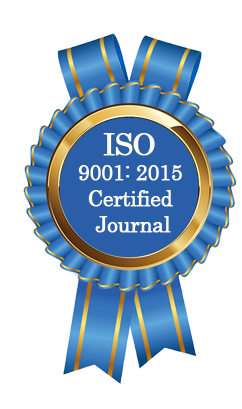| All | Since 2020 | |
| Citation | 105 | 60 |
| h-index | 4 | 4 |
| i10-index | 3 | 2 |
WJAHR Citation 
Login
News & Updation
Best Article Awards
World Journal of Advance Healthcare Research (WJAHR) is giving Best Article Award in every Issue for Best Article and Issue Certificate of Appreciation to the Authors to promote research activity of scholar.
Best Article of current issue
Download Article : Click here
Indexing
Abstract
PATIENTS WITH HOMOCYSTINURIA PRESENTING TO NEUROLOGY CLINIC IN CHILDREN WELFARE TEACHING HOSPITAL MEDICAL CITY COMPLEX
*Alaa Abdulhussain Abbas, Bassam Ibrahim Hashim and Ibrahim Munshid Ibrahim Al-Khafaji
ABSTRACT
Background: Metabolic screening for children with intellectual impairment, ectopia lentis, global developmental delay, and/or vascular events is recommended for early detection of homocystinuria. Despite the expansion of neonatal metabolic screening in many countries, it remains underutilized in others, emphasizing the need for heightened clinical suspicion. Aim: To analyze the clinical and biochemical profiles of patients diagnosed with homocystinuria in a pediatric neurology clinic. Methods: A single-center investigation was undertaken at the Paediatric Neurology Department. Plasma samples from 600 individuals with unexplained neurological abnormalities, developmental delay, visual impairment, stroke-like symptoms, behavioral problems, and seizures were examined. Mass spectrophotometry and HPLC proved homocystinuria in 33 cases. Classical (elevated methionine) and non-classical (normal/low methionine) subtypes were identified, with the classical group further classified as B6 responsive or not. Results: Of 600 patients, 33 (5.5%) had homocystinuria: 29 classical (20.6% B6 responsive, 79.4% non-B6 responsive) and 4 non-classical. Classical patients had global developmental delay (48.3%), hemiplegia (24.1%), ophthalmological referral (20.7%), or seizures (6.9%), whereas non-classical cases had global delay (75%) and seizures (25%). Non-classical individuals had blond eyes but no myopia or ectopia lentis, while classical cases had 72% ocular involvement. Classical patients showed vascular ischaemia (34.5%) and atrophy (58.5%) on brain MRI, whereas all non-classical cases showed microangiopathic alterations and atrophy. Conclusion: In the absence of newborn screening, homocystinuria remains a significant diagnosis in neurologically disordered patients, often delayed. Clinical awareness and accurate biochemical testing are crucial for timely diagnosis and management.
[Full Text Article] [Download Certificate]
